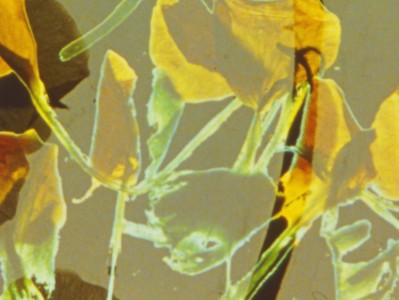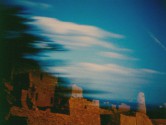
The Lyric Lens
Screening on Film
When Stan Brakhage was twenty-four years old, having already completed ten 16mm films in the relatively conventional avant-garde style of psychodrama and pursuit, he embarked on a filmic adventure that brought him close to his own suicide and upended the basic syntactical rules of cinema as they were known to the world. All that was wrong or inadmissible became the very fabric of his expression. Jump cuts, out of focus scenes, shaky hand-held shots, flare outs, intimate personal subject matters, underexposures, overexposures, repetitive motifs, rhythms based on the movement of the eye, surface scratchings, visible splice lines, and, topping off all that, no sound whatsoever. The camera itself became the explorer, the protagonist. The filmmaker was released from being a recorder of dramatic representation and permitted to find and promote the pure energy of cinema itself as poetic mind. In short, Anticipation of the Night must be considered one of the greatest revolutionary acts in cinema's short history. Filmmaking before and after became a different thing. The individual could now be cinema itself. The very body or muscle of the maker could be expressed and felt.
The second set of two films we are showing tonight were made thirty years later. Stan met his first wife, Jane Collom, while making Anticipation of the Night. Three decades and hundreds of films later, Stan's marriage was dissolving and he was entering into a new relationship with Marilyn Jull, soon to become his second wife. It was during their courtship that they planned a number of car trips around the United States. With great exuberance and joy, Stan entered into the making of the four-part Visions in Meditation. This evening we will screen parts two and three, the second of which is a sound film made to accompany the music of Rick Corrigan. In these films we can witness the full maturity of Stan's camera as investigator and emotional measure. The complete union of subject matter and form is manifest. This wholeness of expression, where form is the meaning and meaning is the form, is a great joy to behold. One additional background note worth mentioning: P. Adams Sitney has pointed out, in part two of Visions in Meditation, that the haunting qualities of the abandoned Mesa Verde cliff dwelling parallel Stan's own abandonment of his family. – Nathaniel Dorsky
Preceded by a talk at 5pm with Ed Halter at the CCVA bookstore, which will have the new edition of Metaphors on Vision available for sale.
PROGRAM
-
Anticipation of the Night
Directed by Stan Brakhage.
US, 1958, 16mm, color, silent, 40 min.
Print source: HFA
-
Visions in Meditation #2: Mesa Verde
Directed by Stan Brakhage.
US, 1989, 16mm, color, silent, 17 min.
-
Visions in Meditation #3: Plato’s Cave
Directed by Stan Brakhage.
US, 1990, 16mm, color, 18 min.






